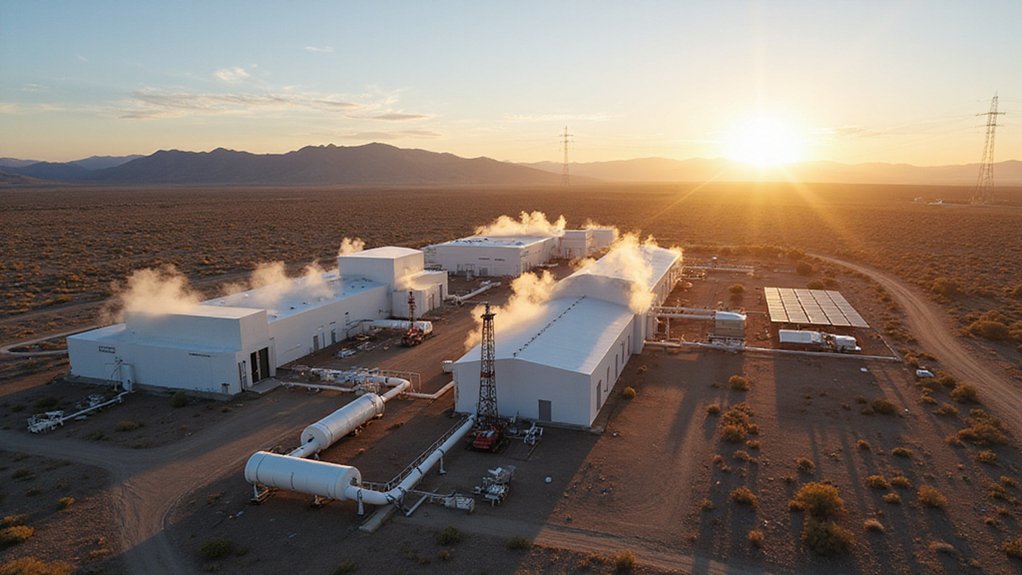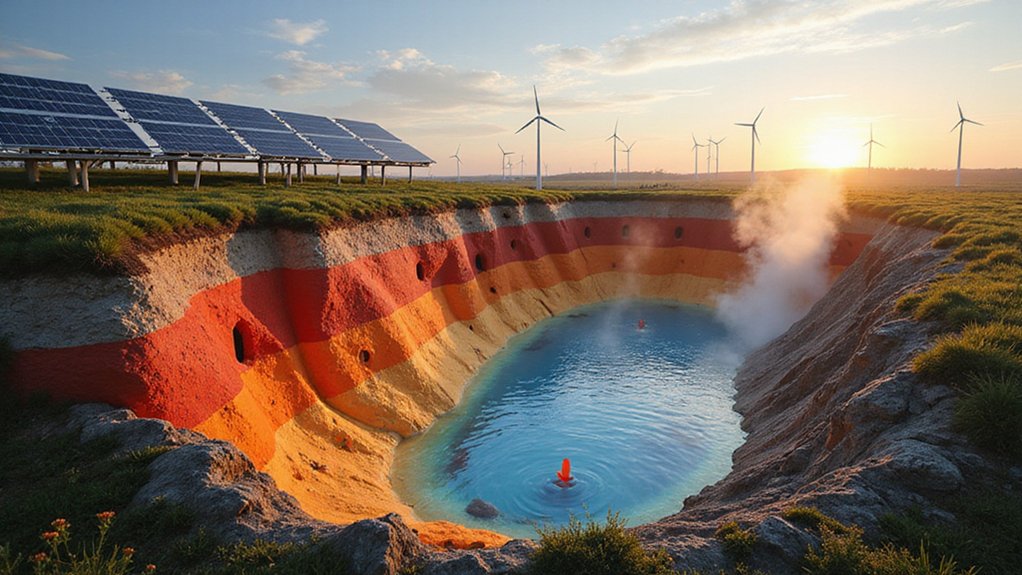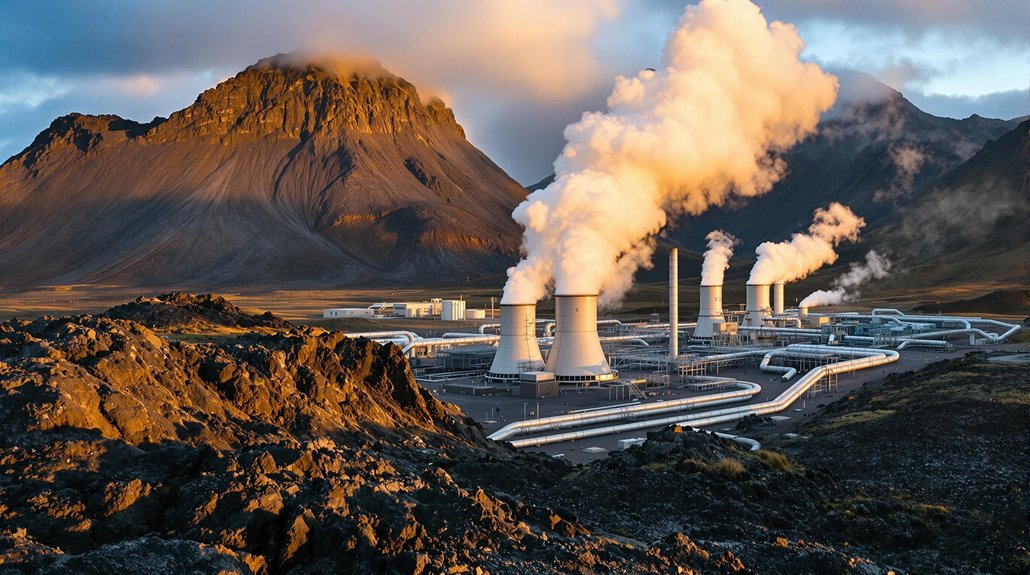America sits on vast geothermal resources that remain largely unused. Studies show these heat sources beneath the earth’s surface could generate up to 530 gigawatts of power by 2050. Unlike solar or wind, geothermal provides consistent energy regardless of weather conditions. While high startup costs have limited development, new drilling technologies and federal incentives are changing the equation. The question remains: can this clean, reliable energy source be harnessed quickly enough to make a meaningful impact on climate goals?
While the United States faces growing pressure to reduce carbon emissions, geothermal energy remains a largely untapped resource with enormous potential. The U.S. currently leads the world in geothermal electricity production with nearly 4,000 megawatts of operating capacity as of 2022, yet this represents only a fraction of what’s possible.
America’s identified geothermal systems can provide over 9,000 megawatts of power generation, with another 30,000 megawatts estimated from undiscovered resources. Even more impressive is the potential that could be revealed through Enhanced Geothermal Systems (EGS), which might add over 500,000 megawatts to the nation’s clean energy portfolio.
Despite this promise, geothermal currently accounts for just 0.4% of total U.S. electricity generation. Growth has been steady but slow at about 3% annually in recent years. The Department of Energy projects generation will increase from 16.5 terawatt-hours in 2023 to 37.2 terawatt-hours by 2050.
One major challenge is geographic concentration. About 95% of existing capacity is located in just two states – California and Nevada. National Renewable Energy Laboratory’s resource mapping shows the greatest potential exists in the western United States where heat flow is highest. This regional dependence reflects the concentration of easily accessible geothermal resources in the western United States, particularly near tectonic boundaries.
Economic barriers also slow development. Geothermal plants require high upfront costs for exploration and drilling compared to other renewables. The technology’s expansion depends on improvements in drilling techniques and reservoir creation for EGS. These projects also benefit from federal tax credits that cover up to 30% of installation costs for qualifying systems.
Federal and state incentives, including tax credits, aim to support new projects. These policy tools could help the industry overcome financial hurdles that have limited growth since the 1980s, when almost half of the current U.S. capacity was installed.
If technological and financial challenges can be addressed, geothermal energy offers a compelling solution to the carbon crisis. Unlike intermittent renewable sources, geothermal provides consistent, baseload power with near-zero emissions. The impressive 96% capacity factor of U.S. geothermal plants demonstrates its reliability as a consistent energy source regardless of external conditions.
With a total potential of 530 gigawatts by 2050, geothermal could become a cornerstone of America’s clean energy future.








